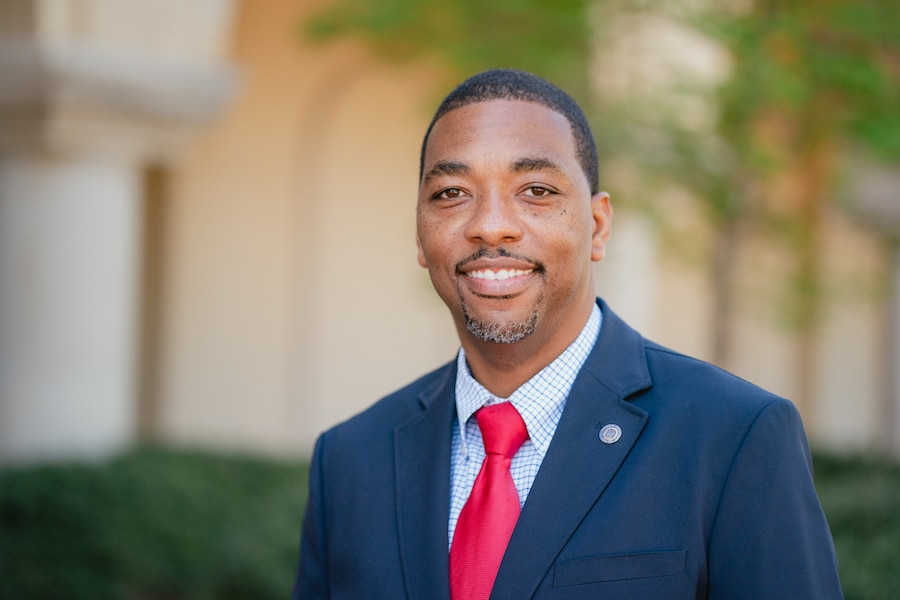Two groups within the Southern Baptist Convention enjoy bulletproof status with every subgroup of our fellowship?disaster relief volunteers and foreign missionaries. That’s fine and God bless ’em. These are folks who show up while the larger number of us settle for clucking our tongues about the need for someone to go. We sometimes miss an important detail about these heroes: they don’t just magically appear at the right place at the right time.
In Texas, our minds are still focused on the devastation of the Gulf Coast, so let’s look at Southern Baptist disaster relief. DR has been the entrée for more than one Southern Baptist formerly clueless about what the denomination means. The guys and gals in the yellow shirts have a pretty elaborate system behind them?otherwise, no food, no trucks, and no idea of where to show up.
A typical DR deployment has many parts. Let’s take Ike as an example. When weather reports began to indicate that the hurricane was going to come ashore with substantial energy, disaster relief units went on alert. Who sends out the alert? The decision involves two major parties, the DR director for the state or states likely to be hit and the national response coordinator. Jim Richardson, a member of SBTC’s staff, serves as our state director. The national coordinator is Mickey Caison, who works for the North American Mission Board. Jim alerts the DR units in Texas and starts recruiting volunteers to mobilize. Mickey contacts directors in some states unlikely to be hit so they can get ready to ride to the rescue. NAMB personnel don’t mobilize every state and every sort of unit at the same time; they focus on units closer to the need and mobilize with a guess about the length of the mobilization and of immanent needs (maybe more hurricanes) in other places.
Do you start to see the picture? Denominationalism at four levels is already involved before Ike floods a single American home. NAMB oversees the big picture, the state convention leaders prepare for either a strike in their own state or mobilization in response to the need of others, local associations that have DR equipment respond to their state leaders, and churches (which may also have equipment) or individuals get ready to go.
It doesn’t end there, though. How does NAMB have the wherewithal to provide money, strategic oversight, or training for more local responders? Well, they have bookkeepers and secretaries and offices and building supervisors that enable them to plan and work. They have money through the SBC Cooperative Program and through the Annie Armstrong Offering. The SBC Executive Committee allocates the CP funds according to the denomination’s annual budget. NAMB leaders also provide evangelism resources for the relief workers so the impact of their ministries may last for eternity. Some NAMB workers will come in later when churches need to be rebuilt or replanted. Hunger relief workers will often get involved in places where families face long-term displacement. Many of the above leaders are trained at one of the six Southern Baptist seminaries.
On the state convention level, most of the above also applies although the focus is more, well, statewide. The state and national news apparatus keeps the event before the people. If you doubt that awareness is an issue, compare the thousands of volunteers that deployed for Katrina relief compared to the smaller number willing to deploy for Ike relief. The fact that Ike has been on fewer front pages than Katrina definitely had an impact. State church planting leaders work closely with associations and local churches in planning for response in that area. Evangelism workers train DR volunteers to share their faith as they serve food or remove fallen trees. A Minister/Church Relations ministry can provide help with emergency relief for pastors. Church Ministries workers provide help to get a recovering church going again with effective Bible study and discipleship. And of course, accountants and business managers at the state level ensure that the relief is disbursed appropriately, allowing the work to be sustainable.
Have you ever given a little kid a flower? Imagine the different response you might get if you pull the whole thing up?roots, dirt and all. Little kids don’t understand the marvelous connection between colorful petals and the nourishment that makes them possible. And while even grownups don’t necessarily want to put the whole ball of dirt on display, we honor its place if we ever want flowers again.
We’re not children. I don’t think we can claim to respect missionaries or DR volunteers if we don’t also respect the elaborate apparatus that makes these things possible. Do you love Southern Baptist missionaries? Then love the schools that taught them, the agency that advocates for religious freedom around the world, the people who wrote the Sunday School and VBS literature God used to lead them to Christ, the people who trained their teachers, and whole glorious root ball. So it is with disaster relief volunteers. SBC volunteers are the most numerous and well-equipped among religious bodies because our support structure is thorough, time-tested, and slow to swerve toward every passing fancy.
Think of the alternative for a moment. Without a national strategy, our missions and our DR work would look like a little kids’ soccer match?all the players stay in one clueless mob kicking furiously whether they see the ball or not. Imagine all our missionaries going to China because the Olympic coverage captured their imaginations. All our DR workers might go to Galveston in Ike response and find themselves shot out and out of place when Hurricane Zerubbabel hits North Carolina. Without state or associational or church leadership, volunteers have no money or equipment, and even a smaller degree of strategy. We’d be like some celebrity showing up with a bass boat to pull a couple of people out of their homes, pose for a photo and go home. No cup of cold water and no “in Jesus name.”
Most things are part of a system. Like a body the system has glorious parts and less glorious parts. But life is more challenging without some of the parts we can’t even pronounce. Paul says in 1 Corinthians 12 the church is that way. The missionary efforts of groups of churches have some of those same characteristics. Woe on us all if we despise some parts of the system based on immature thinking. Love and nurture it all then. The icky structure that works best below ground level helps produce the loveliest aspects of our gospel work.














